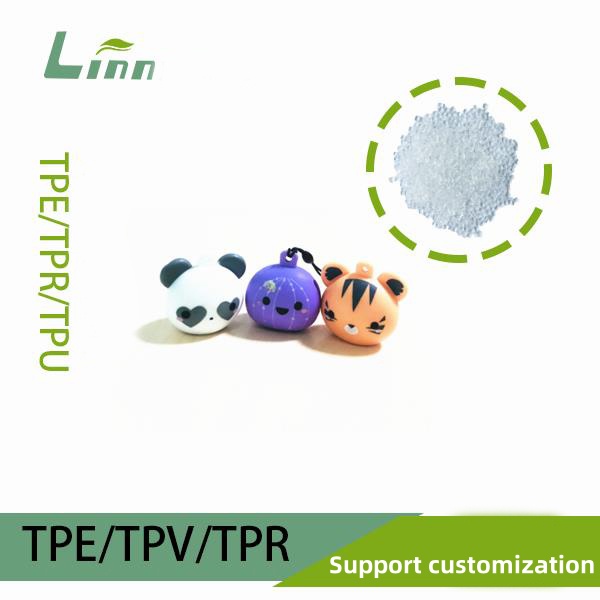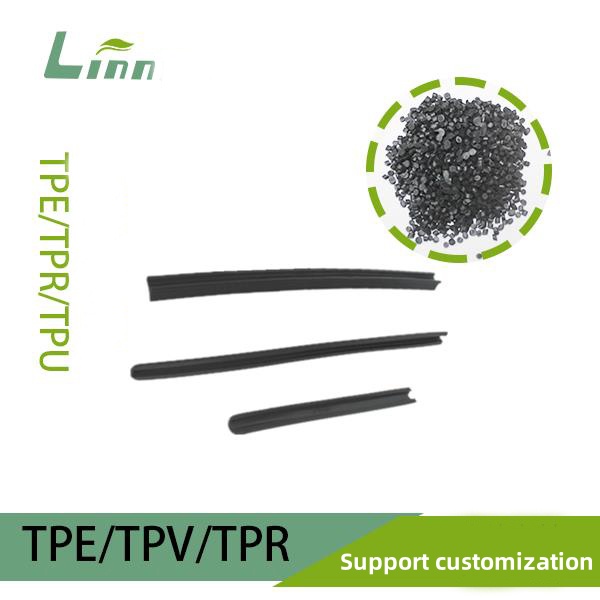As a seasoned professional in the TPE (Thermoplastic Elastomer) industry, I know firsthand how frustrating mold sticking can be for production efficiency and product quality. TPE’s excellent elasticity and processability make it a go-to material for automotive parts, medical devices, and consumer goods, but mold sticking is a common hurdle that can feel like a roadblock. It not only causes surface defects but can also damage molds and slow down the entire production line. In this article, I’ll dive into the reasons behind TPE mold sticking based on my experience and share practical, hands-on solutions to help you overcome this challenge.

1. What Causes TPE Material to Stick to the Mold?
Mold sticking typically occurs during processes like injection molding or extrusion, where the product struggles to release from the mold, sometimes leaving stretch marks or residue. I’ve outlined the main culprits below to help you zero in on the cause.
1.1 High Material Stickiness
Certain TPE grades, especially low-hardness or highly polar types (like SEBS-based or TPU-based TPE), naturally have a sticky texture. Under the high heat and pressure of molding, this can lead to excessive adhesion to the mold surface, causing sticking.
1.2 Incorrect Processing Temperature
TPE processing temperatures typically range from 160°C to 230°C (depending on the grade). If the temperature is too high, the material can become overly “tacky,” increasing adhesion to the mold. If too low, poor flowability may cause uneven cooling, contributing to sticking.
1.3 Mold Surface Issues
Mold surfaces that are too smooth, too rough, or contaminated with oil or residue can worsen sticking. For instance, an overly polished surface can create a “vacuum-like” suction effect, while a rough surface may allow TPE to lodge in tiny grooves, making release difficult.
1.4 Improper Use of Release Agents
Failing to use a release agent—or using one unsuitable for TPE, like silicone-based types—can lead to poor demolding and even contaminate the product surface.

1.5 Flawed Mold Design
Issues with the mold’s ejection system or draft angle can increase demolding resistance. For example, draft angles smaller than 1°-2° or unevenly distributed ejector pins can cause the product to get stuck.
1.6 Suboptimal Process Parameters
Excessive injection pressure, insufficient cooling time, or improper holding time can result in residual stress in the cooled TPE, causing it to cling to the mold.
1.7 Material Formulation or Batch Variations
If the TPE formulation includes incompatible tackifiers or fillers, or if batch-to-batch consistency is poor, sticking issues may arise.
2. How to Fix TPE Mold Sticking?
To address these causes, I’ve put together a comprehensive set of solutions covering materials, molds, and processes. Here’s how to tackle mold sticking step by step:
2.1 Optimize Material Selection and Preparation
TPE grades vary widely in stickiness. When choosing a material, I recommend discussing demolding performance with your supplier. If you’re already committed to a grade, try these approaches:
Drying Process: TPE must be thoroughly dried before molding. Use a dehumidifying dryer at 80°C to 100°C for 2-4 hours to ensure moisture content is below 0.1%. Moisture can increase stickiness and complicate demolding.

Add Release Aids: If product performance allows, incorporate small amounts of zinc stearate or polyethylene wax (typically 0.5%-1% by weight) into the TPE formulation to reduce mold adhesion. Test beforehand to avoid impacting transparency or surface finish.
Material Preparation Parameters Reference Table:
| TPE Type | Drying Temperature (°C) | Drying Time (Hours) | Target Moisture Content (%) |
|---|---|---|---|
| SEBS-based TPE | 80-90 | 2-3 | <0.1 |
| TPV | 90-100 | 3-4 | <0.1 |
| TPU-based TPE | 100-110 | 3-4 | <0.05 |
My Experience: I once helped a Linn client tweak their drying process. Their TPE was sticking due to moisture absorption, but extending drying time and sealing storage containers significantly reduced the issue.
2.2 Adjust Processing Parameters
Process settings directly affect TPE flow and demolding. Here’s how to optimize them:
Temperature Control: Set the barrel temperature to 160°C-180°C (rear zone) and the nozzle to 190°C-210°C to avoid excessive stickiness from overheating. Keep mold temperature at 20°C-50°C for even cooling.
Injection Pressure and Speed: Start with an injection pressure of 50-80 MPa to prevent over-compression. Use medium to low injection speeds to minimize friction between the material and mold.

Cooling and Holding: Extend cooling time (typically 10-30 seconds, depending on part thickness) and set holding time to 2-5 seconds to ensure the part solidifies fully, reducing residual stress.
Processing Parameter Optimization Table:
| Process Parameter | Recommended Range | Remarks |
|---|---|---|
| Injection Pressure (MPa) | 50-80 | Increase slightly for thin-walled parts |
| Injection Speed | Medium to Low | Prevents air entrapment |
| Mold Temperature (°C) | 20-50 | Higher temps improve surface finish |
| Cooling Time (Seconds) | 10-30 | Longer for thicker parts |
Tip: I recall a case where a client’s short cooling time of 8 seconds caused surface sticking. Extending it to 15 seconds made demolding smooth and improved surface quality.
2.3 Enhance Mold Design and Maintenance
The mold is critical to solving sticking issues. Here’s what I recommend:
Optimize Draft Angles: Ensure draft angles are at least 1°-2°, especially for deep cavities or complex shapes. Smaller angles increase demolding resistance.
Improve Ejection System: Add more ejector pins and optimize their placement for even force distribution. Pin diameters typically range from 2-5 mm, depending on part size.
Mold Surface Treatment: Maintain mold surface roughness at Ra 0.4-0.8—neither too smooth nor too rough. Consider chrome plating or PVD coating to reduce adhesion if needed.
Regular Cleaning: Clean the mold after each shift with a mild solvent like isopropyl alcohol to prevent oil or TPE residue buildup.
Case Study: A Linn client making TPE grips had sticking issues due to an overly polished mold. I suggested retexturing the surface to Ra 0.6 and adding two ejector pins, which eliminated the problem entirely.

2.4 Use Release Agents Wisely
Choose non-silicone-based release agents (like water-based or fluorine-based options) to avoid surface contamination. Apply a thin, even coat and reapply every 50-100 cycles. Overuse can cause surface defects, so moderation is key.
My Advice: I often use a water-based release agent, wiping it with a clean cotton cloth for even coverage. This works well for sticky TPE grades.
2.5 Ensure Material Batch Consistency
Slight variations between TPE batches can trigger sticking. I recommend locking in a single grade and batch with your supplier through a long-term agreement and validating each batch with trial molding. If sticking correlates with a specific batch, request a formulation analysis or volatile content report from the supplier.
Real-World Example: A client once faced increased sticking after switching TPE batches. Testing revealed the new batch had excess tackifier. Adjusting the formulation fixed it.
2.6 Optimize the Production Environment
High humidity can make TPE stickier. Keep workshop humidity below 50%, using a dehumidifier if needed. Store raw materials in sealed containers to avoid prolonged air exposure. I helped a client revamp their warehouse storage, and after sealing TPE containers, their sticking rate dropped by 30%.

3. How to Prevent TPE Mold Sticking?
Fixing sticking is great, but preventing it saves time and effort. Here are my top prevention tips:
Create a Standard Process: Develop an SOP covering material drying, mold maintenance, and process settings for consistency.
Train Your Team: Regular training ensures operators understand TPE properties and demolding techniques. Many sticking issues stem from human error.
Use Inspection Tools: Add a surface roughness tester or microscope to the production line to monitor mold condition and catch issues early.
Collaborate with Suppliers: Stay in touch with your TPE supplier for updates on material data or processing tips to keep your methods current.
4. Real-World Case Study
Last year, a Linn client reached out about persistent mold sticking in their TPE phone cases, which was delaying deliveries. After visiting their facility, I identified three issues:
Overly Smooth Mold Surface: Polished to a mirror finish, causing TPE adhesion.
Short Cooling Time: Set at 8 seconds, leaving parts under-cured.
Batch Variation: The new TPE batch was stickier than expected.
My recommendations were:
Retexture the mold surface to Ra 0.5 and apply a light PVD coating.
Extend cooling time to 15 seconds and set holding time to 4 seconds.
Work with the supplier to tweak the TPE formulation, reducing tackifier content.
These changes slashed the sticking rate from 20% to 2%, boosting production efficiency and product consistency. This case taught me that sticking often results from multiple factors, requiring a thorough approach to resolve.

5. Frequently Asked Questions
To make things easier, I’ve answered some common questions about TPE mold sticking:
Q1: Why do some TPE grades stick more than others?
A: Low-hardness or high-polarity TPEs (like SEBS-based) are naturally stickier. Opt for grades with release additives or enhance mold surface treatment.
Q2: Can release agents affect TPE surface quality?
A: Unsuitable agents (like silicone-based) may cause greasiness or hazing. Use water-based agents and apply sparingly.
Q3: Does mold surface roughness impact sticking?
A: Absolutely. Surfaces that are too smooth or too rough can worsen sticking. Aim for Ra 0.4-0.8 roughness.
Q4: Why does sticking only happen in certain areas?
A: It could be uneven ejection or localized under-cooling. Check pin placement and mold cooling channels for uniform force and temperature.
Q5: Why is small-scale molding fine, but mass production causes sticking?
A: Mold temperature rise, material moisture, or batch inconsistencies may be the cause. Verify environmental conditions, storage, and mold cooling.
6. Conclusion
TPE mold sticking can be tricky, but with systematic troubleshooting and optimization, it’s entirely manageable. My advice is to scrutinize every detail—material, mold, and process. Better yet, proactive prevention through standardized workflows and rigorous quality control can keep sticking issues at bay.
I hope this guide equips you with practical tools to improve your TPE molding. If you face other challenges, feel free to connect—I’m eager to share my insights and help you produce top-notch TPE products!


